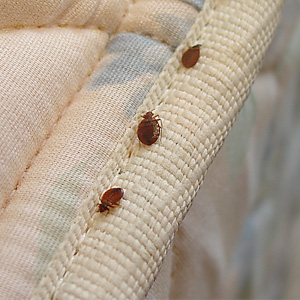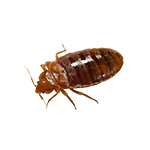Bed Bugs Control
Bed bugs emerge usually at night from hiding places, seeking human blood. While pathogens have been found in bed bugs, the bed bug apparently does not transmit diseases to humans. Bed bugs can survive more than a year without feeding.
Most people have never seen a bed bug. Adults are wingless, about one-fourth of an inch long, and flat to fit in cracks and crevices where they hide by day. Females typically lay three to five adhesive eggs per day in crevices and depressions. Eggs and newly hatched nymphs are somewhat translucent and only about one-sixteenth of an inch long. After feeding, nymphs become bright red. At night, bed bugs seek warm hosts, leaving their hiding places in mattresses, box springs, bed frames, nightstands, curtains, couches and wall voids, baseboards, carpet edges, door and window frames, picture frames, smoke detectors, electrical switches and outlets, peeling paint and wallpaper.


